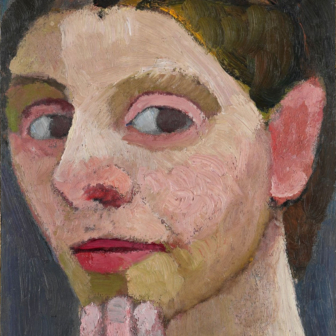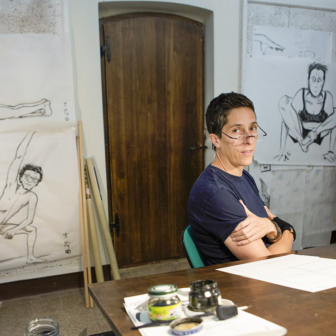What Doctors Feel: How Emotions Affect the Practice of Medicine
By Danielle Ofri | Beacon Press | $29.99
AT THE beginning of What Doctors Feel Danielle Ofri introduces the reader to the work of Jerome Groopman, author of the bestselling How Doctors Think. Groopman is a Harvard Medical School professor best known as a staff writer for the New Yorker. In How Doctors Think he describes the way doctors arrive at diagnoses both correct and, perhaps more importantly, incorrect.
One of the most common cognitive errors Groopman describes is confirmation bias – the error of only paying attention to facts that support your original contention. It was shown back in the 1970s that most doctors make their diagnosis within a few minutes, sometimes even seconds, of meeting a patient. Information that subsequently becomes available – the findings of the physical examination or the results of blood tests and X-rays, for example – is often interpreted in a way that supports the initial diagnosis. Contrary information may be ignored, or at least downplayed. Most medical errors, he says, “are mistakes in thinking, and part of what causes these cognitive errors is our inner feelings, feelings we do not readily admit to and often don’t even recognise.”
Where Groopman dissects how we make mistakes, Ofri describes how the emotional state of the doctor contributes to cognitive errors. She examines in considerable detail how she and other doctors feel when they actually make mistakes.
Ofri is a primary care physician at the Bellevue Hospital in New York, the oldest public hospital in the United States; in some ways she is the American equivalent of a general practitioner, but she also looks after patients in hospital. Her principle thesis is that the practice of medicine is essentially a human interaction and that the emotions of both the doctor and the patient form, in her words, the basso continuo of that interaction. That emotions are important in determining the way we make rational decisions seems self evident, but the fact that so many doctors seem unable to monitor their own emotions is, I think, one of Ofri’s motivations for writing.
I grew up with the beautifully crafted, emotionally restrained prose of the English-born, New York–based neurologist Oliver Sacks. His first book, Awakenings, published in 1973, told the story of the patients in a Bronx psychiatric hospital who were woken from their decades-long coma when the first effective drug for Parkinson’s disease was released in the late 1960s. (W.H. Auden called it a masterpiece and it was made into a film with Robin Williams playing Sacks and Robert De Nero as one of his patients. How must the shy and slightly socially awkward Sacks have felt to see himself on the big screen as Robin Williams!) Probably Sacks’s best-known book, The Man who Mistook His Wife for A Hat, rekindled the art of patient narrative and generated a series of imitators, most of whom struggled to capture the clinical intricacies of their patients’ disease while retaining the sense of wonder of what it means to be human that Sacks so effortlessly conveys. (Not that Sacks’ books are always easy to read – his penchant for footnotes can be distracting to the casual reader. Some of his publications are more footnote than main text.)
Sacks is always with a patient but he is never the point of the interaction. Even in his autobiography Uncle Tungsten he examines his younger self with a degree of benign detachment. Many were shocked to read his frank account in the New Yorker last year of his experimentation with drugs of all sorts in the 1960s, which forms part of his new book Hallucinations.
Ofri’s website has a link to a video of her recent interview with Sacks and it is clear that she, too, places him in her Pantheon of medical writers. Ofri herself is one of the most prominent exponents of this kind of narrative writing at present. She blogs, she tweets, she is a regular contributor to the New York Times and she has four books in print. Where Sacks is involved but detached during his patient encounters, Ofri is in up to her neck. While Sacks will use a story to, say, identify the site of the brain damage that made his posthumously famous patient think that his wife was a hat, Ofri describes her own and her colleagues’ interactions with patients to illustrate the emotional pathology in the doctor.
A recurring complaint through the book concerns the failure of Ofri’s fellow medicos to possess and display “empathy,” the ability to imaginatively enter into the feelings of another. If empathy were a vitamin, Ofri would be one of it most enthusiastic prescribers. It’s not that I disagree with her desire to improve the way doctors relate to their patients, it is more the reduction to one word of a complicated interplay of passions, feelings and behaviours that I disagree with. Perhaps I am being a little harsh here – I do believe that one of the singular failures of modern medical practice results from the lack of application of humane values in our patient interactions. But empathy has become a buzzword that needs, dare I say it, to be deconstructed.
I have worked with doctors who are technically proficient, who demonstrate a meticulous attention to detail and worry if they miss any aspect of a patient’s care. This is a good doctor to have looking after you. But some of them lack that ineffable quality that allows them to truly connect with their patients, to be able to perceive what is going on behind the illness. These are not the rare, cruel doctors who really couldn’t give a toss about their patients, or the more common, emotionally careless doctor, who often puts his or her own needs before those of the patient. Rather, these are good-hearted people who struggle to keep their emotional camera in wide angle, preferring instead a tight focus. They are knowledgeable, indeed most of them have WikiPedic medical knowledge, but they lack the ability to interpret nuance, subtext, subtle reticence or hesitation on the part of the patient.
I am not writing these types off: believe me, I would take ten of them over one emotionally attuned but medically inept doctor. But fixing these “deficiencies” is not as simple as saying that they “need to learn to be more empathic.” In fact, this may be the very kind of reductionism that those who rail against the heartlessness of modern practice accuse others of.
Martin Flanagan, a columnist with the Melbourne Age, recently wrote that when he asked a trusted adviser what the important things in life were, he said that it all came down to one word - kindness. I think I can understand what kindness is, in all its shapes and forms. I may not be able to define it simply, but I certainly know it when I see it. There are other practitioner qualities that we can name – traits that it would be hard to argue are not a necessary component of the good doctor –generosity, selflessness, humour, tenderness, tact, resolve, a sense of justice, respectfulness, humility… I could go on. Instead of just nodding in general, non-specific agreement every time the portmanteau “E” word is uttered, we could use the list to give more exact names to what we are trying to develop in our young medical professionals.
ONE OF THE central stories in What Doctors Feel involves Julia, an undocumented Guatemalan resident who has heart failure. (The American “undocumented” seems so much gentler than our “illegal”). Julia has a cardiomyopathy, a weakening of the heart-muscle fibres for reasons, in her case, unknown. As a non-citizen, she isn’t entitled to the heart transplant that she ultimately needs, but Ofri’s (and others’) advocacy eventually gets her access to a transplant unit. Unfortunately this triumph of persistence and (heart)string-pulling ends in tragedy. The human equation that underlies heart transplantation (someone must die for another to live) is not even zero-sum in this case.
Ofri’s devastation when Julia dies is moving to read, and represents an example of empathy crossing the line into sympathy. Where empathy is understanding what it might be like to walk in someone else shoes, sympathy is the actual feeling of the blisters. Most doctors traverse this invisible barrier at times but to practise in constant sympathy is to practise for just a short time. If empathy is a vitamin, it is possible to overdose. Crying in the presence of your patients may sound like a human thing to do – it may also, in the circumstances, be the worst thing to do. There are times when your equanimity is the one thing that is holding the patient, or the family, together. Your tears may be an indulgence, masquerading as empathy: a projection of your own, unrelated fears that are misplaced in the presence of another’s independent suffering. A doctor’s tears should usually, I believe, be shed in private.
I don’t wish to dishonour Ofri’s emotional response to her patients. I have no doubt her self-revelation is partly pedagogic – a device to allow others to identify and reflect. To deny that we can be moved by our patients’ plight is to deny our own humanity, but the doctor needs to suppress the outward display of that emotion in most circumstances for the sake of the patient. Caring about your patient must always be the default position. It isn’t about us: crying for our patients should be uncommon and crying with our patients, rare.
Nevertheless I would happily recommend this book to my medical students and junior doctors. Non-medical people who want to know what it is like to be a doctor might also find it helpful. I will admit to a hint of annoyance with the near neurotic self-possession Ofri displays in some of the stories and with the reappearance of so much material that she has previously published (albeit, always with full attribution). The repetition suggests an author in need of new clinical experience. At times the prose is measured and exact with a fine rhythm, at others it is as breathless as the cardiac patient she is describing. This is a matter of personal taste and in no way detracts from the underlying value of the stories that she tells.
It is especially useful for young, and not so young, Australian doctors to learn that their experiences with patients are, for the main part, universal. The setting and the accents may be different but the New York hospital seems to be just as busy, the work just as harrowing, as ours. There are important structural differences to reflect on though. We can celebrate the fact that the Australian system, at least theoretically, allows even the poorest of the poor to gain access to the same kind of treatment that the most wealthy in our society have. (Sixty per cent of bankruptcies in the United States are the result of inability to pay health bills, something which simply does not happen in this country.) Ofri describes the physical and mental collapse of one of her junior doctors who, after working several days without adequate sleep, found himself unable to make even a simple decision. This kind of work practice has almost disappeared from Australia but, remarkably, remains an issue in the United States.
Ofri is in no doubt that being a doctor is special. “I sometimes compare career notes with friends who are in the business world, and I’ve asked what their worst fear is,” she writes. “It’s usually something along the lines of making a financial blunder, screwing up a major project, having an investment fall apart, losing a job, disappointing the boss or family, losing money. I have to restrain myself from saying, That’s it? That’s all you are afraid of?...”
Obviously the doctor has a patient’s life to play with and the stakes, in Ofri’s opinion, are much higher. “But the truth is that fear overwhelms even the most psychologically sound and well-adjusted trainee. At some point it happens to nearly every single person who travels through the medical training process. If you don’t believe me, just ask any doctor you know…”
This one certainly believes her. •




